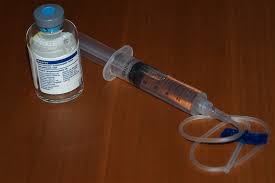Abstract
Concern for transmission of human T-cell lymphotropic virus, type 1 (HTLV-1) infection to recipients of infected cellular blood products has prompted development of tests to eliminate blood units with HTLV-I antibodies. Most hemophilic men from the United States became infected with human immunodeficiency virus (HIV) before HIV donor screening and before blood products were processed to inactivate the virus. To assess whether these men might also be infected with HTLV-I, we examined the HTLV-I antibody status of 127 factor VIII (hemophilia A) recipients and 71 factor IX (hemophilia B) recipients.
One HIV-seronegative and four HIV-seropositive persons were HTLV-I reactive by enzyme-linked immunosorbent assay (ELISA). Four of five ELISA-reactive serum samples were negative by HTLV-I immunoblot assay (IB); 1 reactive and 1 borderline reactive serum were indeterminate on IB (p19 reactivity), but negative by radioimmunoprecipitation assay (RIPA). Peripheral blood mononuclear cells from one patient with indeterminate HTLV-I IB were negative for HTLV-I genomic sequences by polymerase chain reaction. The other indeterminate patient’s serum antibody pattern was stable over a 2-year period, suggesting this was not an instance of early HTLV-I seroconversion. These results reaffirm the safety of factor components in the United States with regard to HTLV-I but emphasize the importance and need for further testing of reactive HTLV-I ELISA results with a second more specific technique.
Lairmore MD, Jason JM, Hartley TM, Khabbaz RF, De B, Evatt BL
Blood 1989 Nov;74(7):2596-9
PMID: 2508796
Lairmore-1989-Blood-2596.full_1